Transforming an Overgrown Hillside into a Classic Garden
By Tara Kelly
Photos by: Miki Duisterhof
Hydrangeas. Tulips. Daffodils. Peonies. Alliums. These are some of Helen Cook’s favorite flowers. The mainstays of her garden, and the ones she uses in her flower arrangements. Widely known for her talents as a floral designer, Cook has collaborated for many years with David Thieringer at Mashomack on arrangements and table centerpieces. She is also head of the flower committee at a private club in New York City. This is now.
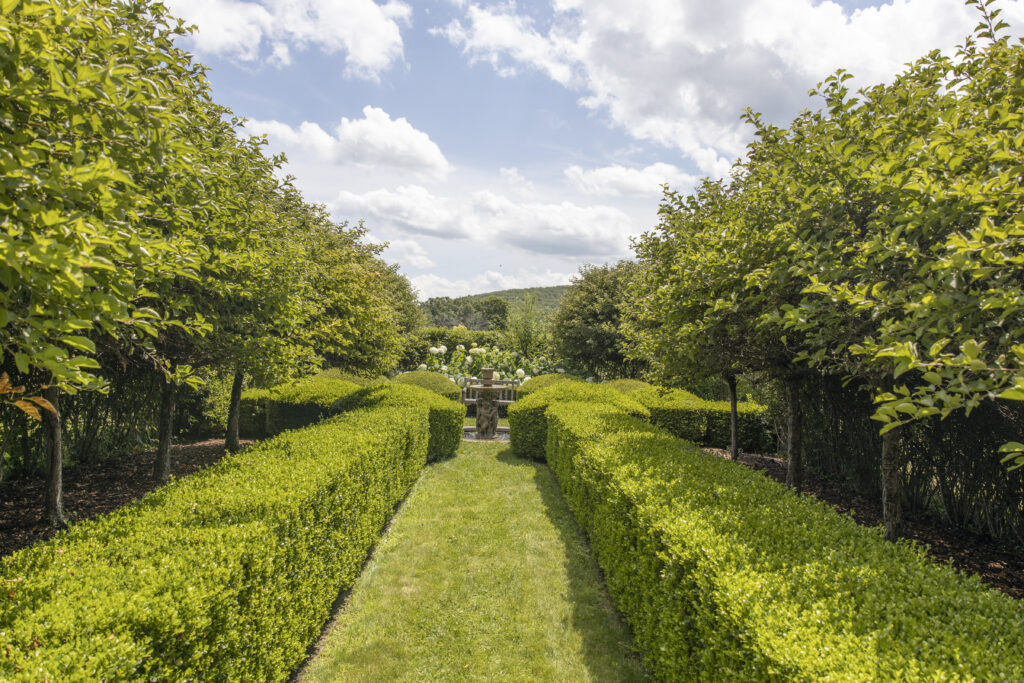
But back in 1985, such a profusion of flowers was just a vision when she bought Rocky Reef Farm, off Route 82 in Stanfordville, a somewhat dilapidated property, with large overgrown fields, not much in the way of trees, and no garden plantings. A blank canvas, as it were. What it did have was a view.
“The view is why I built the house where it is. It’s sort of a pause as you go up the hill,” Cook says. “It’s wonderful to sit in the evening, looking out across the valley. Even better if people are playing polo [in the field across the road].”
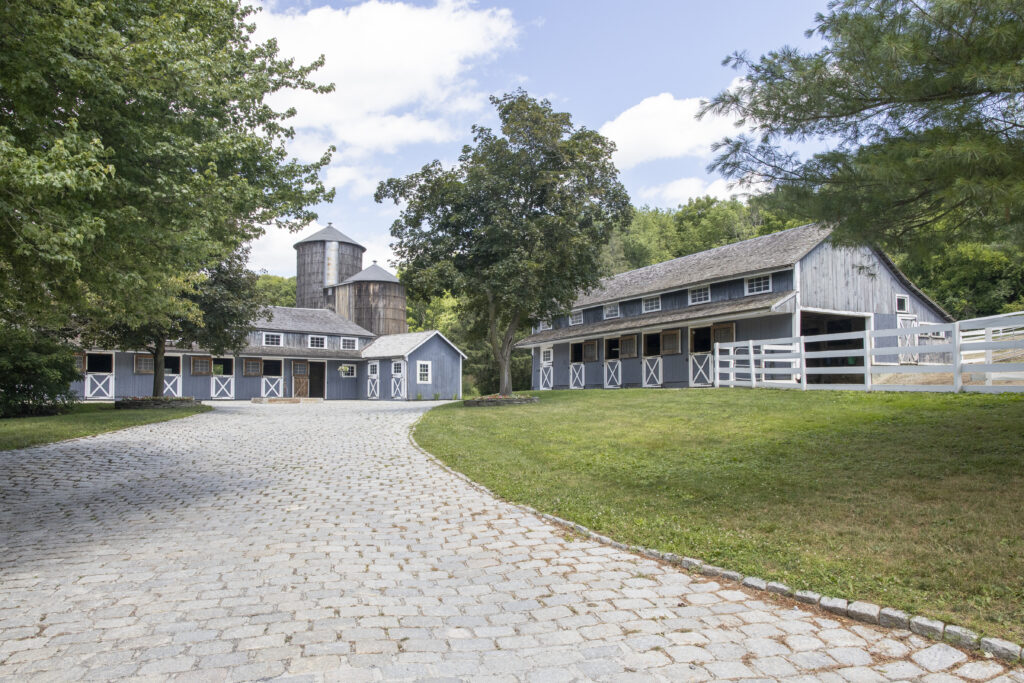
Cook credits Judy Murphy of Old Farm Nursery in Lakeville, CT with creating the suggestion of an English feel: the cobblestoned drive that winds past the horse barns at the bottom of the hill, the brick archway that leads to a secret garden, the boxwood that define the formal spaces, and the now, quite large, specimen trees. Cook points out a huge pine, and a pink horse chestnut that is a favorite.
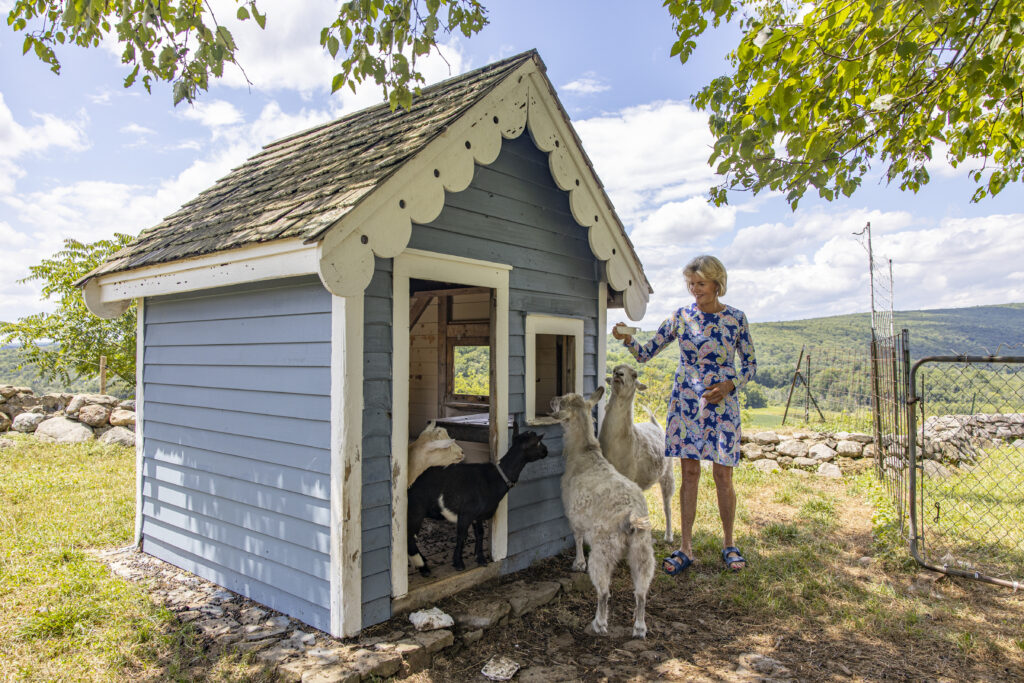
“When we built the house, we also did extensive stonework around the house, and placed the formal gardens to the side and back,” Cook says. “All the specimen trees were planted after the house was built.” The front terrace looks out over Stissing Mountain and is guarded by a life-sized bronze statue of her black Lab, Indy, by local sculptor Peggy Kauffman.
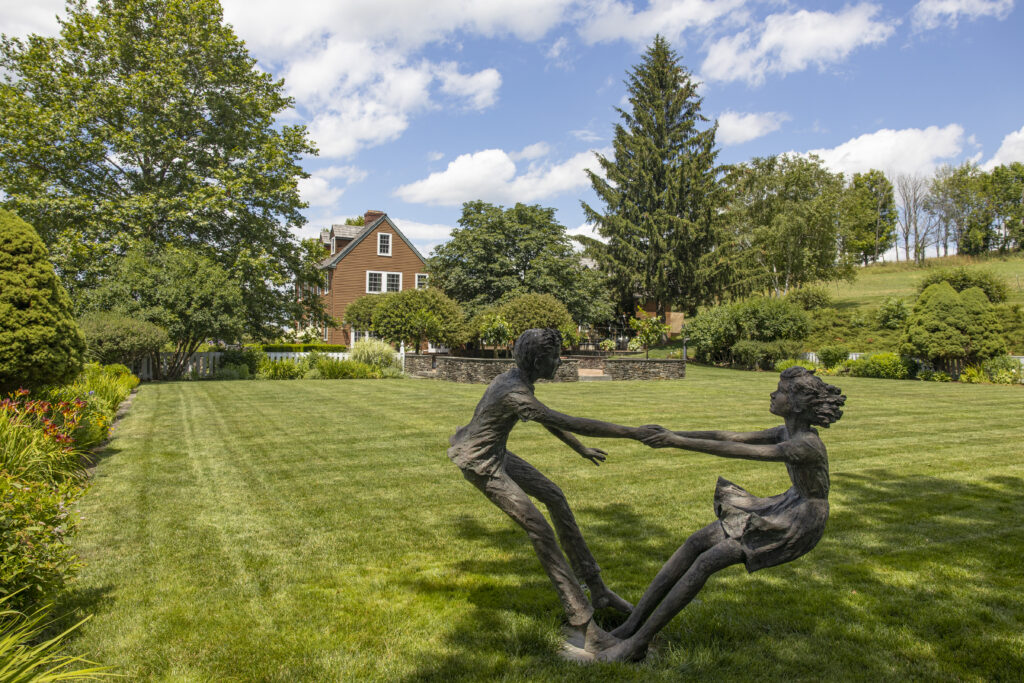
Bronze statues also punctuate the spaces providing an element of fun. Dotted around the garden are whimsical sculptures, inherited from her father, of children at play. Cook is one of six children. She has four children of her own, plus two stepsons, and one grandchild, so children, and play, have always been an important part of the equation. And part of the decision to create a large and inviting pool area. “We decided to make a big pool because we always had a lot of kids over,” Cook says. Also for the children’s amusement are an assortment of miniature donkeys and horses.
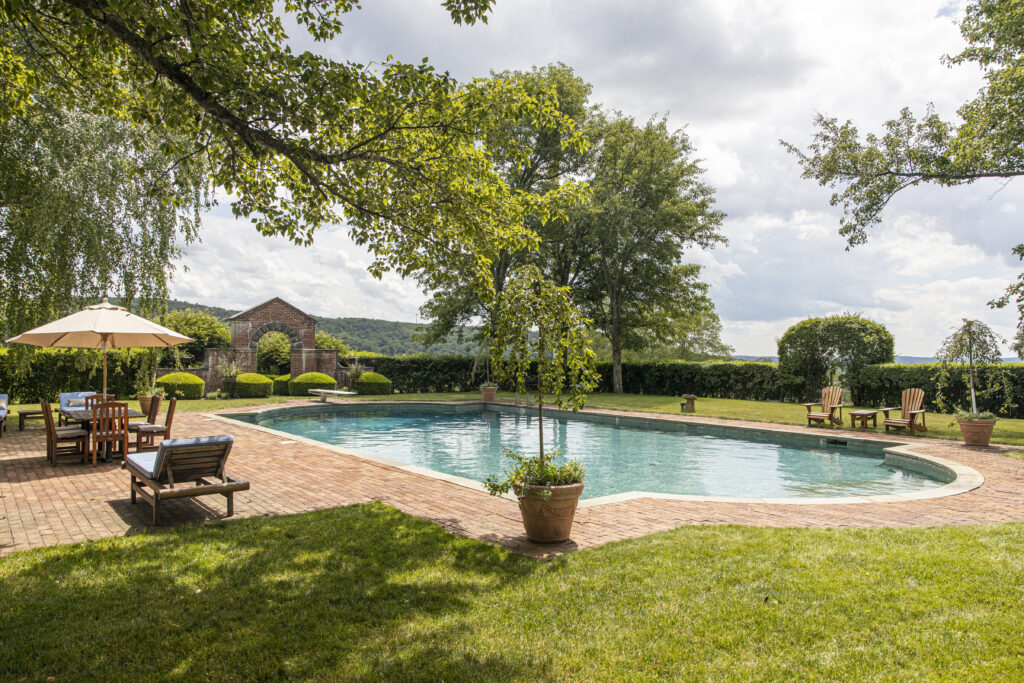
As happens with all gardens, hers has evolved, and expanded. “Trees are often potted for their first year, perhaps decorating the pool area or on one of the terraces, and then at the end of the year we plant them in the garden.” The weeping cherry trees that stand sentry by the four corners of the pool will eventually be planted as a group near the house.

In the tradition of the best English garden, Cook has combined the classic, and the curious, for the ultimate in charm.

